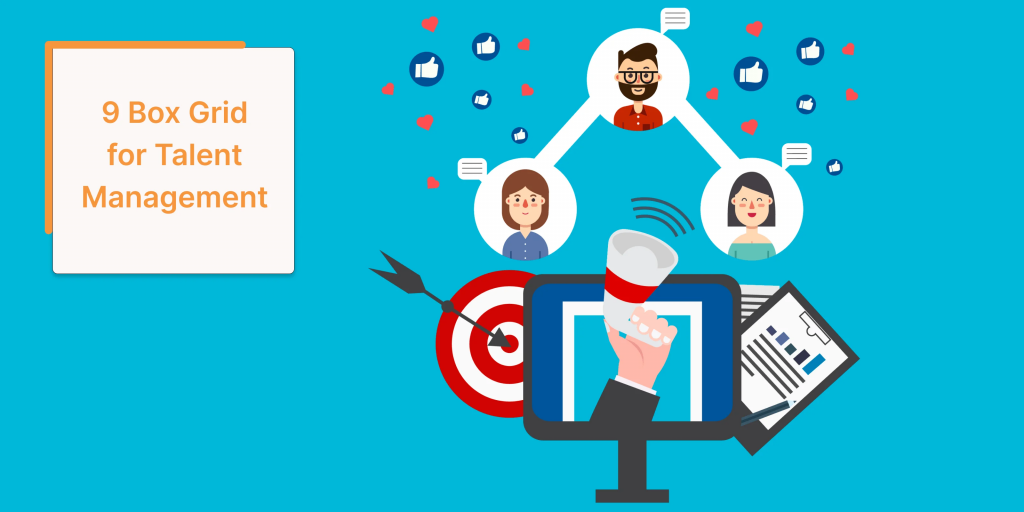Onboarding process in HR: Meaning & Definition
Employee onboarding in HR refers to the structured process of integrating new hires into an organization. In fact, an efficient onboarding process helps the new joiners gain the knowledge, skills, and understanding that are needed to become productive and engaged members of the company.
Additionally, new hire initiation involves familiarizing new employees with company policies, such as leave and code of conduct. Additionally, it includes their roles, responsibilities, and the organization’s core values.
Ultimately, a well-structured onboarding process in HR not only supports the employee’s transition but also boosts retention, productivity, and job satisfaction.
Frequently Asked Questions
Q1. | What is employee onboarding meaning? |
| Ans. | Employee onboarding in HRM is the process of integrating and training new employees in the organization. This process, in turn, helps them understand their job, company rules, and work culture so they can settle in and start working smoothly. Therefore, understanding “what is onboarding” is key to building a strong foundation for new hires. |
Q2. | What is the employee onboarding process? |
| Ans. | It is a way of helping new hires get comfortable in their new role. Specifically, it includes introducing them to company policies, their responsibilities, and the workplace culture. Furthermore, it also aims to create a welcoming environment where they can easily connect with colleagues and build professional relationships. |
Q3. | How long does onboarding usually take? |
| Ans. | It usually takes from a few weeks to 3 months. However, it depends on the company and the role. In some cases, organizations extend it up to 6 months or even a year to ensure full integration. This is especially true for senior positions. |
Q4. | What are the 4 phases of onboarding? |
| Ans. | The 4 Phases of Employee Onboarding 1. Pre-Arrival: This phase happens before the employee’s first day. It involves completing necessary paperwork and setting up everything needed for a smooth beginning. Preparing in advance helps new hires feel welcomed and ready to be productive from day one. 2. Orientation: Orientation is about helping the new employee feel like part of the company. This includes an introduction, a warm welcome, and sharing the company’s values and culture. Notably, the first week is crucial for building comfort and connection. 3. Training (Soft + Core): Training should be gradual, starting with basic orientation and moving into job-specific skills. During the first month, the focus is on learning without overwhelming the new hire. Subsequently, this phase sets the foundation for long-term productivity. 4. Performance & Feedback: Once training is underway, employees start contributing. At this stage, regular feedback and guidance during this time help them improve and grow within the organization. |
Q5. | What activities are included in employee onboarding? |
| Ans. | Some common activities included in the HR onboarding process are: 1. Job offer 2. Salary negotiations 3. Completing new hire paperwork 4. Training on company policies and culture 5. Role-specific job training and development 6. Employee handbook overview 7. Benefits enrollment and education 8. Facility tours 9. Introductions to executives and team members Together, these activities collectively ensure a smooth transition for new hires and help them adjust to their new roles and environment. |
Q6. | What’s the difference between onboarding and orientation? |
| Ans. | Onboarding is an ongoing process that helps new employees integrate into the company, including training and role preparation. On the other hand, orientation, which is also called induction a shorter, initial event that introduces new hires to the company. It happens in the first few days of employment. |
Q7. | What is the goal of onboarding? |
| Ans. | The goal of this process is to help new hires adjust, feel engaged, and stay with the company long-term. 1. Accustom: It introduces employees to the company’s culture, values, and their role, helping them feel aligned from day one. 2. Engage: It builds early connections, boosts motivation, and sets the tone for a positive work experience. 3. Retain: A smooth onboarding reduces turnover by creating a supportive start, encouraging employees to stay and grow. |
Q8. | What should an onboarding checklist include? |
| Ans. | An onboarding checklist is a step-by-step guide used during the process. To begin with, it helps HR teams and managers stay organized. First, it outlines all tasks that must be completed before a new hire joins. Then, it ensures everything is ready for their arrival. Next, it guides the employee through their first few days at work. As a result, nothing important gets overlooked. Overall, it makes it smoother and more efficient for everyone. |
Q9. | What are the best practices for onboarding new employees? |
| Ans. | Onboarding is a strategic process that sets the stage for long-term success. Some of the best practices to make it effective are as follows: 1. Start early and send a warm welcome before day one. 2. Prepare in advance with a clear onboarding checklist. 3. Get to the main part quickly to keep things purposeful. 4. Encourage engagement through team involvement and leadership participation. 5. Ensure a culture fit and create space for interaction. 6. Collect feedback to continuously refine the process. In conclusion, a smooth employee initiation experience builds connection, confidence, and clarity from day one. |
Liked what you read? Let’s take it to the next level!
Resources
Explore how HR in 2025 will transform the workplace and redefine people strategies.
Learn why HR metrics are key to better engagement and smarter decisions.
Discover how the 9-box grid helps identify and develop talent for business growth.





